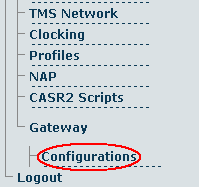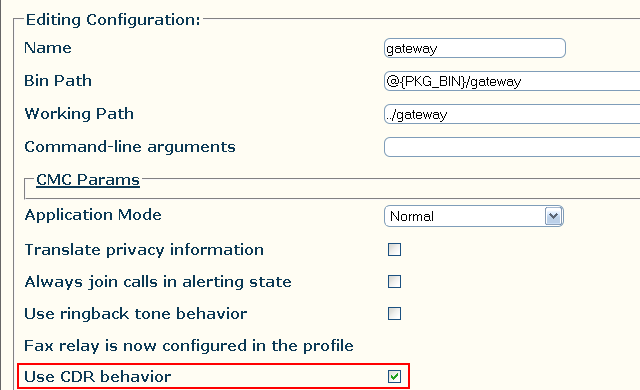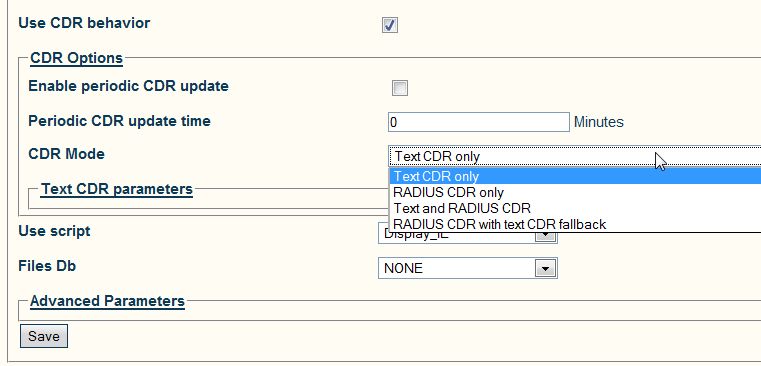Toolpack:Enabling RADIUS A
From TBwiki
(Difference between revisions)
(→Applies to version(s): v2.6) |
('Configuring RADIUS' and 'Configuring RADIUS Servers' section were move to other articles) |
||
| (6 intermediate revisions by 2 users not shown) | |||
| Line 20: | Line 20: | ||
* Select the '''CDR Mode''': | * Select the '''CDR Mode''': | ||
**'''Text CDR only''': Will store the CDRs in a flat file. See [[Text Call Detail Records (CDR)|Text CDR]] | **'''Text CDR only''': Will store the CDRs in a flat file. See [[Text Call Detail Records (CDR)|Text CDR]] | ||
| − | **''' | + | **'''RADIUS CDR only''': Will send the CDR to an external RADIUS Server. See [[RADIUS|Radius CDR]] |
| − | **'''Text and | + | **'''Text and RADIUS CDR''': Will store the CDRs in a flat file and send the CDR to an external RADIUS Server. |
| − | **''' | + | **'''RADIUS CDR with Text CDR Fallback''': Will send the CDR to an external RADIUS Server and if the RADIUS server cannot handle the load of CDRs, they will be stored in a flat file. |
* Click '''Save''' to save your changes. | * Click '''Save''' to save your changes. | ||
| Line 30: | Line 30: | ||
[[Image:RADIUS_v2_5_gw_cfg_success.png|border]] | [[Image:RADIUS_v2_5_gw_cfg_success.png|border]] | ||
| − | |||
| − | |||
| − | |||
| − | |||
| − | |||
| − | |||
| − | |||
| − | |||
| − | |||
| − | |||
| − | |||
| − | |||
| − | |||
| − | |||
| − | |||
| − | |||
| − | |||
| − | |||
| − | |||
| − | |||
| − | |||
| − | |||
| − | |||
| − | |||
| − | |||
| − | |||
| − | |||
| − | |||
| − | |||
| − | |||
| − | |||
| − | |||
| − | |||
| − | |||
| − | |||
| − | |||
| − | |||
| − | |||
Latest revision as of 15:42, 3 January 2013
Applies to version(s): v2.6
This page describes how to enable and configure a TMG system to capture CDRs, using a RADIUS server.
Enabling RADIUS
1- Select Gateway -> Configurations from the navigation panel.
2- Verify that the box Use CDR behavior is checked.
3- Configure the CDR behavior in the CDR Options section:
- Enable periodic CDR update will add one entry in the CDR per Periodic CDR update time, in minutes.
- Select the CDR Mode:
- Text CDR only: Will store the CDRs in a flat file. See Text CDR
- RADIUS CDR only: Will send the CDR to an external RADIUS Server. See Radius CDR
- Text and RADIUS CDR: Will store the CDRs in a flat file and send the CDR to an external RADIUS Server.
- RADIUS CDR with Text CDR Fallback: Will send the CDR to an external RADIUS Server and if the RADIUS server cannot handle the load of CDRs, they will be stored in a flat file.
- Click Save to save your changes.
4- Verify that the Gateway configuration was successfully updated. message appears.


